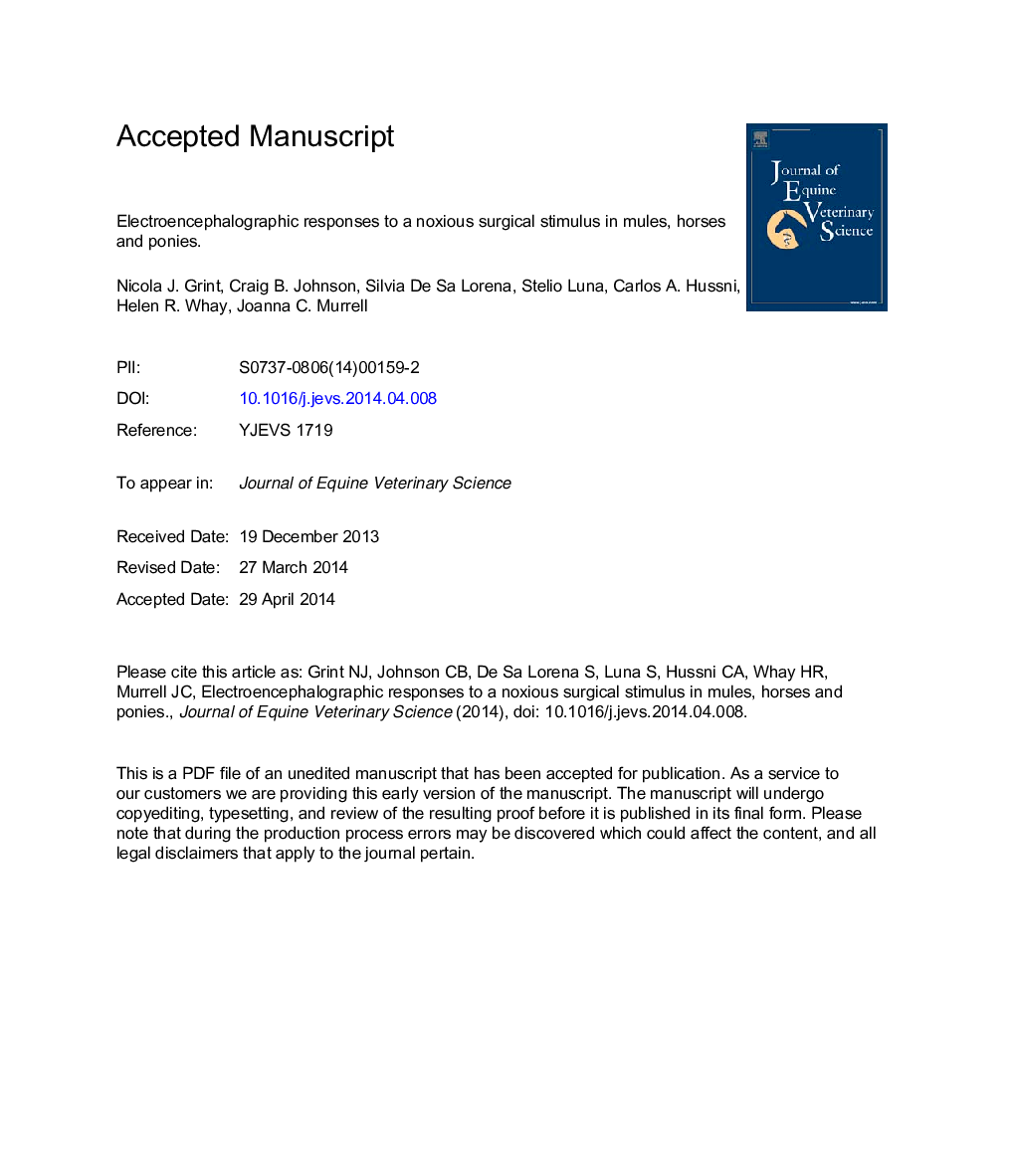| Article ID | Journal | Published Year | Pages | File Type |
|---|---|---|---|---|
| 10961372 | Journal of Equine Veterinary Science | 2014 | 35 Pages |
Abstract
The aim of this study was to investigate the electroencephalographic (EEG) response of equidae to a castration stimulus. Study 1 included 11 mules (2½-8 years; 230-315 kg) and 11 horses (1½-3½ years; 315-480 kg); study 2 included four ponies (15-17 months; 176-229 kg). They were castrated under halothane anesthesia after acepromazine premedication (IV [study 1] and intramuscular [study 2]) and thiopental anesthetic induction. Animals were castrated using a semiclosed technique (study 1) and a closed technique (study 2). Raw EEG data were analyzed and the EEG variables, median frequency (F50), total power (Ptot), and spectral edge frequency (F95), were derived using standard techniques at skin incision (skin) and emasculation (emasc) time points. Baseline values of F50, Ptot, and F95 for each animal were used to calculate percentage change from baseline at skin incision and emasculation. Differences were observed in Ptot and F50 data between hemispheres in horses but not mules (study 1) and in one pony (study 2). A response to castration (>10% change relative to baseline) was observed in eight horses (73% of animals) and four mules (36% of animals) for F50 and nine horses (82%) and four mules (36%) for Ptot. No changes in F95 data were observed in any animal in study 1. Responses to castration were observed in three ponies (75% of animals) for F50, one pony (25%) for F95, and all ponies for Ptot. Alteration of acepromazine administration and castration technique produced a protocol that identified changes in EEG frequency and power in response to castration.
Related Topics
Life Sciences
Agricultural and Biological Sciences
Animal Science and Zoology
Authors
Nicola J. BVSc, PhD, Craig B. BVSc, PhD, Silvia DVM, PhD, Stelio DVM, PhD, Carlos A. DVM, PhD, Helen R. BSc, PhD, Joanna C. BVSc, PhD,
